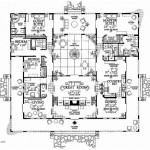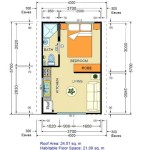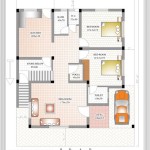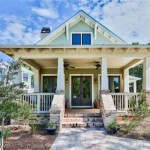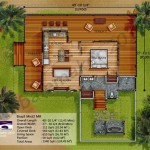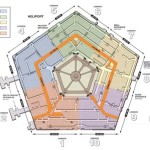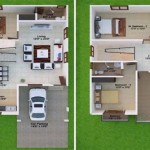House Floor Plans With Turrets: Architectural Grace and Functional Living
Turrets, those captivating cylindrical or polygonal structures adorning the corners of buildings, have long been associated with castles, fairy tales, and grand estates. While often perceived as purely decorative elements, turrets can be seamlessly integrated into modern house floor plans, adding a touch of architectural distinction and providing unique functional spaces. Understanding the nuances of designing and incorporating turrets requires careful consideration of structural integrity, aesthetic harmony, and intended use.
This article will explore the various facets of house floor plans featuring turrets, delving into their historical context, design considerations, functional possibilities, and the different architectural styles in which they are most effectively employed. The intention is to provide comprehensive information for those considering incorporating a turret into their home design, whether for new construction or renovation projects.
Historical Context and Architectural Significance
The turret's origins can be traced back to medieval fortifications, where they served a practical purpose as defensive vantage points. Positioned at corners, they offered unobstructed lines of sight for archers and defenders, allowing them to effectively ward off attackers. Over time, the functional aspect of turrets diminished, but their aesthetic appeal persisted. They became symbols of wealth, power, and refinement, often incorporated into castles, manor houses, and grand public buildings to project an image of prestige.
During the Victorian era, turrets experienced a resurgence in popularity, particularly in architectural styles such as Queen Anne, Gothic Revival, and Romanesque Revival. These styles embraced ornamentation and historical references, making turrets a natural fit. Architects of the time experimented with different shapes, sizes, and placements of turrets, further solidifying their place in residential architecture. Today, while less common than in the past, turrets continue to be a sought-after architectural feature, adding a touch of timeless elegance and historical charm to contemporary homes.
The architectural significance of a turret extends beyond its visual appeal. It can dramatically alter the overall silhouette of a house, creating a focal point that draws the eye and sets the dwelling apart. The curvature of a turret contrasts with the straight lines of traditional walls, adding visual interest and dynamism to the exterior design. Furthermore, the interior space within a turret offers unique design opportunities, allowing for the creation of cozy nooks, dramatic staircases, or light-filled reading rooms.
Design Considerations for Integrating Turrets
Successfully incorporating a turret into a house floor plan requires careful planning and attention to detail. Several key design considerations must be addressed to ensure structural integrity, aesthetic harmony, and functional usability. These considerations range from the initial architectural design to the finishing touches of interior decor.
Structural Integrity: The structural integrity of a turret is paramount. Due to its curved or angled shape, a turret requires specialized engineering to ensure it can withstand wind loads, snow loads, and seismic activity. A qualified structural engineer should be consulted to design the foundation, framing, and roofing system of the turret. The connection between the turret and the main structure of the house is particularly critical, as this is where the forces are concentrated. The engineer will determine the appropriate materials and construction techniques to ensure the turret is structurally sound and will remain stable over time.
Aesthetic Harmony: The design of the turret should complement the overall architectural style of the house. A turret that clashes with the existing design can detract from the property's curb appeal. The size, shape, and detailing of the turret should be carefully considered to ensure it integrates seamlessly with the rest of the house. For example, a Queen Anne style house might feature a conical turret with decorative shingles and brackets, while a more contemporary design might opt for a cylindrical turret with minimalist detailing. The materials used for the turret's exterior should match or complement the materials used on the main house, creating a unified and cohesive aesthetic.
Functional Usability: A turret should not merely be a decorative appendage; it should serve a functional purpose within the house. The intended use of the turret will influence its size, shape, and interior layout. For example, a small turret might be ideal as a cozy reading nook, while a larger turret could accommodate a spiral staircase or a home office. The placement of windows and doors within the turret should also be carefully considered to maximize natural light and ventilation. The interior design of the turret should be consistent with the overall style of the house, creating a seamless transition between the turret and the adjacent rooms.
Interior Layout: The interior layout of a house with a turret needs to be carefully planned to maximize space and functionality. The curved or angled walls of the turret can present challenges when it comes to furnishing and decorating. Custom-built furniture may be necessary to fit the unique shape of the space. The placement of windows and doorways should be carefully considered to optimize natural light and create a sense of openness. In multi-story turrets, a spiral staircase is a common design element, providing a space-saving and visually appealing way to connect the different levels.
Functional Possibilities and Architectural Styles
The functional possibilities of a turret are diverse, limited only by imagination and budget. Turrets can be adapted to serve a variety of purposes, adding both practical value and aesthetic appeal to a home. The choice of architectural style will influence the shape, size, and detailing of the turret, as well as its intended use.
Reading Nook/Study: A small, cozy turret is ideal for creating a reading nook or study. The curved walls and ample natural light provide a sense of privacy and tranquility, making it the perfect place to curl up with a book or work on a project. Built-in bookshelves can be integrated into the curved walls, maximizing storage space and adding to the room's character. A comfortable armchair, a small table, and a reading lamp complete the space, creating a relaxing and inspiring environment.
Spiral Staircase: A larger turret can accommodate a spiral staircase, providing a dramatic and space-saving way to connect different levels of the house. The spiral staircase becomes a focal point within the turret, adding visual interest and architectural flair. The walls of the turret can be adorned with artwork or decorative lighting, enhancing the overall ambiance of the space. The staircase can lead to a rooftop observation deck, offering panoramic views of the surrounding landscape.
Home Office: A turret can also be used as a home office, providing a quiet and private workspace. The curved walls can create a sense of enclosure, promoting concentration and focus. A custom-built desk can be designed to fit the unique shape of the turret, maximizing workspace and storage. Large windows can provide ample natural light, reducing eye strain and improving productivity. The turret can also be equipped with a comfortable chair, a filing cabinet, and other essential office equipment.
Architectural Styles: Consider the architectural styles when planning a turret.
Queen Anne: Queen Anne style houses often feature prominent turrets with conical roofs, decorative shingles, and intricate detailing. The turrets are typically located at the corners of the house, adding to its asymmetrical and picturesque appearance. The interior of the turret might be used as a living room, a dining room, or a bedroom, depending on its size and location.
Gothic Revival: Gothic Revival style houses sometimes incorporate turrets with pointed arches, crenellations, and other medieval-inspired details. The turrets are often used to create a sense of grandeur and drama. The interior of the turret might be used as a library, a study, or a chapel.
Romanesque Revival: Romanesque Revival style houses can feature turrets with rounded arches, massive walls, and minimal ornamentation. The turrets are typically used to create a sense of solidity and permanence. The interior of the turret might be used as a foyer, a dining room, or a living room.
Turret Construction Materials and Techniques
The selection of construction materials and techniques is crucial for ensuring the durability, longevity, and aesthetic appeal of a turret. The materials should be chosen to withstand the elements, complement the overall architectural style of the house, and meet local building codes.
Framing: The framing of a turret can be constructed from wood, steel, or concrete. Wood framing is the most common choice for residential construction, as it is relatively inexpensive and easy to work with. Steel framing is stronger and more durable than wood framing, but it is also more expensive. Concrete framing is the most durable option, but it is also the most complex and costly to install. The choice of framing material will depend on the size and complexity of the turret, the local climate, and the budget.
Exterior Cladding: The exterior cladding of a turret can be made from a variety of materials, including brick, stone, stucco, wood siding, and metal siding. Brick and stone are durable and aesthetically pleasing, but they are also relatively expensive. Stucco is a versatile and affordable option, but it requires regular maintenance. Wood siding is a classic choice, but it is susceptible to rot and insect damage. Metal siding is durable and low-maintenance, but it can be less visually appealing than other options.
Roofing: The roofing of a turret can be made from a variety of materials, including shingles, slate, tile, and metal. Shingles are the most common choice, as they are relatively inexpensive and easy to install. Slate and tile are durable and aesthetically pleasing, but they are also more expensive. Metal roofing is durable and low-maintenance, but it can be less visually appealing than other options. The choice of roofing material will depend on the shape and pitch of the turret roof, the local climate, and the budget.
Windows and Doors: The windows and doors of a turret should be chosen to complement the overall architectural style of the house and provide adequate natural light and ventilation. The windows can be single-pane, double-pane, or triple-pane, depending on the climate and the desired level of energy efficiency. The doors can be made from wood, steel, or fiberglass, depending on the style of the house and the desired level of security. The placement of windows and doors should be carefully considered to maximize natural light and create a sense of openness.

Distinctive 4 Bed House Plan With Turret And Options 21236dr Architectural Designs Plans

Elegant European House Plan With Two Story Turret 59950nd Architectural Designs Plans

European Two Story Home Design With Turret Plan 4920

European Floor Plan Upper 453 49 Mediterranean Style House Plans Luxury
Small Victorian House Plan With Turret 3 Bedroom 1444 Sq Ft

Plan 21167dr Elegant 3 Bed House With Distinctive Turret Architectural Design Plans Dream

One Story European House Plan With Turret 62676dj Architectural Designs Plans

Ultimateplans Com House Plan Home Floor Number 131028
Small Victorian House Plan With Turret 3 Bedroom 1444 Sq Ft

Castle House Plan With A Round Turret

